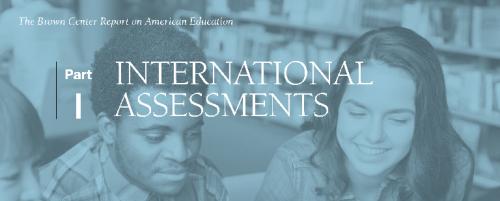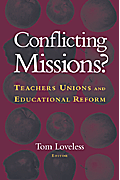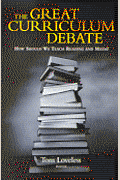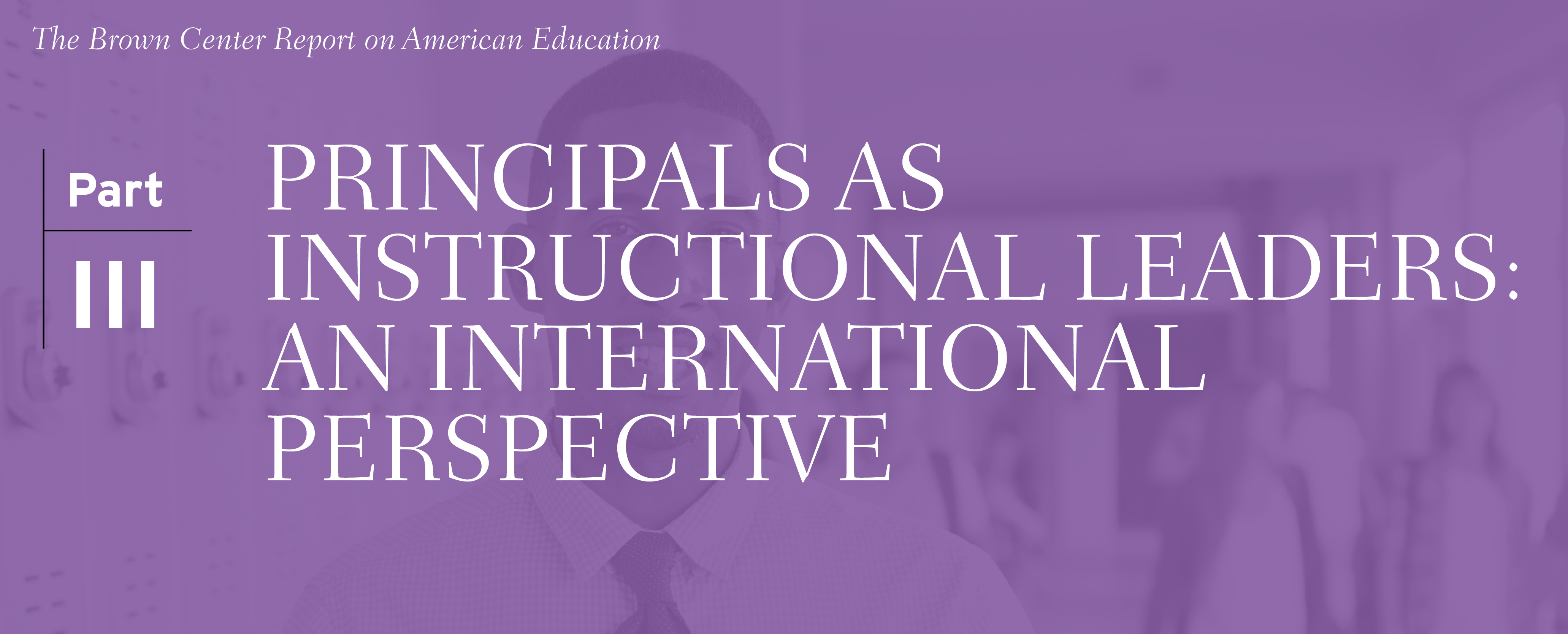
Historically, one of the school principal’s key instructional duties has been observing teachers as they teach and then providing feedback on the lesson. Ellwood Cubberly offers a vignette in the third edition of Public School Administration (1929) in which a young teacher’s math lesson is critiqued as follows: “entirely wrong procedure for type of problems used,” and “no attempt at problem solving instruction.” The teacher is praised for “managerial ability” but the principal’s notes reveal that his debriefing of the lesson included telling the novice instructor, “Being a new teacher to our school, she evidently did not know how we taught Arithmetic.”1
Feedback from principals was taken seriously in the 1920s, but, in reality, observations were infrequent, and teachers made all of the important day-to-day instructional decisions. Contemporary scholars believe times have changed, and principals now have a greater say in how instruction is conducted. The change may be partially due to accountability systems that require schools to demonstrate growth on annual state assessments. According to Dan Domenech, executive director of the American Association of School Administrators, increasing the stakes associated with state-measured school performance has meant principals assuming a greater role in shaping classroom instruction.2
The call for principals to act as “instructional leaders” predates No Child Left Behind (NCLB) by at least two decades; it first appeared as a prominent policy recommendation in the “effective schools” research.3 Has the value of this recommendation been confirmed by sound evaluations? It has not. A 2003 meta-analysis of studies on the relationship of principals’ leadership activities to student achievement calculated an average correlation coefficient of .25.4 Of the factors differentiating successful and unsuccessful principals, involvement in the design of curriculum, instruction, and assessment practices only ranked 20th out of 21 characteristics (r = .16).
Economists have applied the statistical techniques of their field to the question as well. A study analyzing data from High School and Beyond, a large national database collected in the 1980s, found selection of teachers, along with setting academically ambitious goals, as means by which principals positively influence achievement.5 A recent study examining data from Texas schools found that highly effective principals produce, for the average student in their schools, approximately two to seven months of additional learning in mathematics compared to students in schools with an average principal.6 The effect appeared to be driven by how principals mold a faculty through the selection of teachers.
As suggested by the econometric literature, a strain of the research on instructional leadership is concerned with specifying the exact behaviors that can produce a positive impact on student learning. The challenge is compounded by the fact that instructional leadership can be defined many ways. Grissom, Loeb, and Master followed 100 principals of urban schools for three years.7 They discovered that principals spent about one-eighth of their time on instructional activities (12.6 percent). Overall, they found no relationship between instructional leadership and student achievement. Individual behaviors mattered, however. Two ways that principals interact with teachers—evaluating and coaching—were found to be positively associated with achievement gains. Perhaps the most intriguing finding was that informal classroom walkthroughs were negatively associated with achievement gains, especially in high schools. In the study, walkthroughs were the most common tool for principals to supervise instruction (consuming 5.4 percent of time), followed by formal evaluations (2.4 percent).8
The effort to identify positive instructional leadership behaviors has garnered the attention of international researchers. A 2003 review of international research on the topic located 125 empirical studies, concluding that principals affect student achievement indirectly, through their dealings with teachers and by shaping school culture.9
The current study investigates principal leadership from an international perspective. It is presented in three parts. The first section sets the stage by looking at the most recent data on instructional leadership. How does the U.S. compare to other nations? The second section digs into the archives of international data to explore how principals’ leadership activities changed during two intervals—2003 to 2007 and 1995 to 1999—and how those changes were related to student achievement. The final section discusses the implications of the findings for future research.
Instructional Leadership on TIMSS
The Trends in International Math and Science Study (TIMSS) is an international assessment of students in grades four and eight. In 2011, 63 nations took part. The test was originally given in 1995 and has been repeated every four years since then. Along with the assessment, surveys of teachers and school principals are conducted to collect contextual information on schools. In 2011, principals were asked how much time they spend on various leadership activities. Let’s look at how they responded to questions involving instructional leadership.10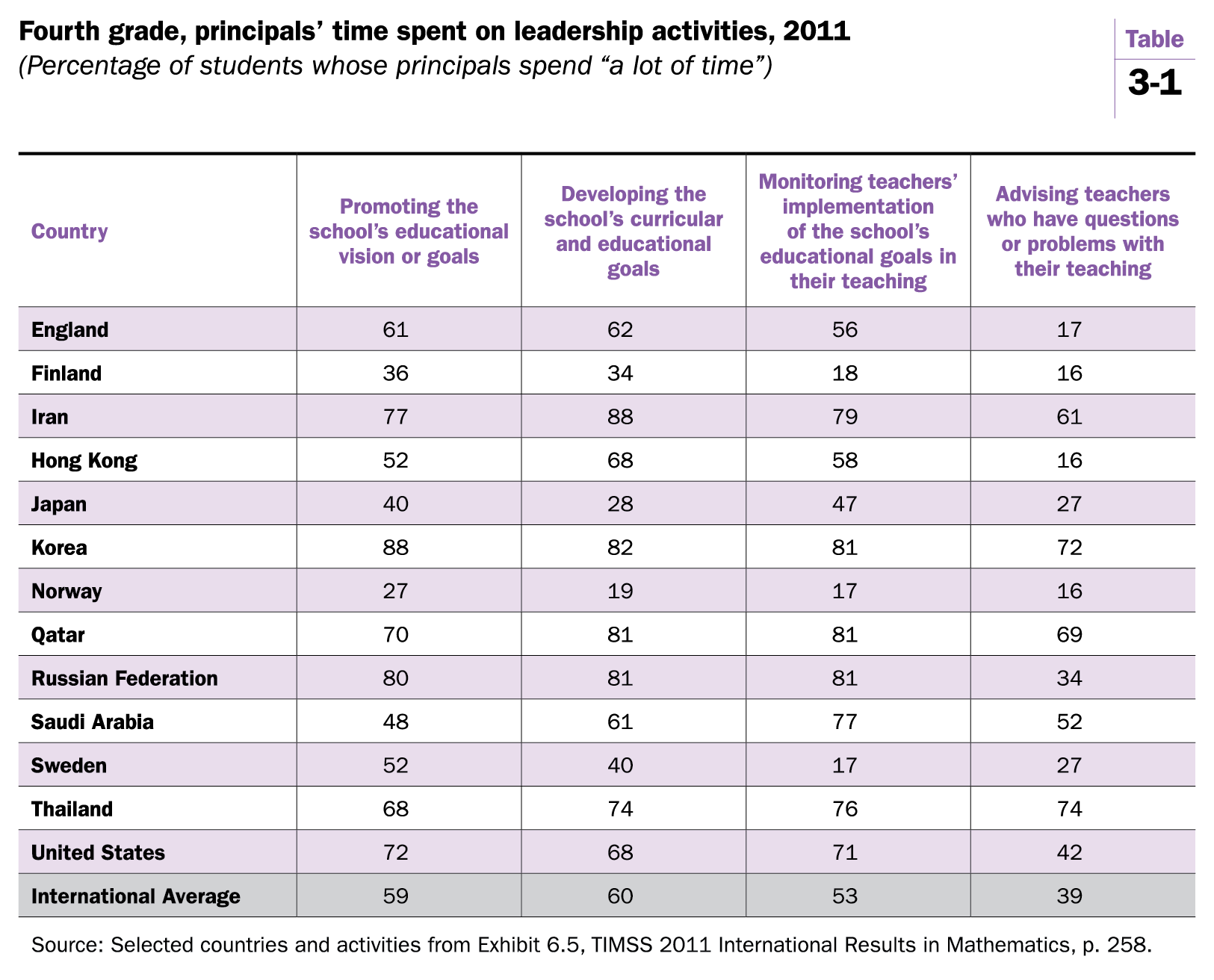
Table 3-1 shows the responses of principals from several countries, along with international averages (in the bottom row). The data are for schools containing a fourth grade, which typically means a school serving elementary grade students (kindergarten through fifth or sixth grade). The leadership activities are arrayed left to right from the least direct (goal setting) to the most direct (monitoring and advising) in terms of supervising teachers. The data report the percentage of students attending schools whose principal spends “a lot of time” on each activity.
The current study investigates principal leadership from an international perspective.
Several interesting patterns are apparent. More than 50 percent of students internationally have a principal who devotes a lot of time to developing and promoting their schools’ educational goals and monitoring teachers’ implementation of those goals in teaching. Less time is given to giving advice to teachers about questions or problems with teaching (39 percent). The U.S. comes in well above the world averages on three of the four activities. The proportion of American students with principals spending a lot of time offering instructional advice to teachers is about average (42 percent).
Four countries that are well known for consistently scoring at the top of international assessments—Finland, Hong Kong, Japan, and Korea—vary on these dimensions of principal leadership. (In the discussion below, subnational entities such as Hong Kong are referred to as “countries” or “nations.”) Indeed, principals in Finland and Japan appear particularly “hands off” when it comes to instructional leadership, registering well below the international norms. Finland’s principals are known to defer to teachers on instructional decisions.11 Only 18 percent of students in Finland attend schools in which principals monitor teachers’ implementation of school goals in instruction, compared to 53 percent internationally. In Japan, lesson study is a popular activity, in which teams of teachers meet to plan and review instruction. Only 27 percent of Japanese principals advise teachers who have questions or problems with their teaching, compared to 39 percent internationally.11
Principals in Korea, on the other hand, appear to be active instructional leaders. The same is true for Thailand, where 74 percent of students have principals who spend a lot of time giving instructional guidance to teachers. Asian countries appear heterogeneous in approaches to instructional leadership by school principals. Countries in the Middle East—Iran, Qatar, and Saudi Arabia are included here—look similar to each other and are more likely to have principals who monitor instruction and offer advice to teachers on teaching. But there are still some differences within the region. Saudi principals are less likely to promote or to set educational goals than their colleagues in Qatar or Iran.

Table 3-2 displays data for principals of schools with an eighth grade. In many countries, the eighth grade is housed in lower secondary schools (e.g., middle schools in the U.S.) with a departmentalized structure. On all four leadership activities, the international averages are greater than reported at fourth grade. Principals in schools with an eighth grade tend to engage more actively with instruction than principals of schools with primary grades. The U.S. is an interesting exception to that pattern, with data at the eighth grade that are statistically indistinguishable from the fourth grade figures.
Principals in Finland and Japan appear particularly “hands off” when it comes to instructional leadership.
Is Instructional Leadership Related to Student Achievement?
Does it matter if principals exercise instructional leadership? Unfortunately, the 2011 TIMSS questions on the topic had never been used before; however, two other time periods in the TIMSS archives did pose the same battery of questions on instructional leadership: 2003-2007 and 1995-1999. The current study analyzes data using a simple difference in differences approach to examine whether changes in principal behaviors are correlated with changes in TIMSS math scores.
Modeling data drawn from multiple cross sectional samples gives the analysis a quasi-longitudinal perspective on change, diminishing potential bias from unobserved variables (provided they remain constant). The widespread belief that cultural values influence performance on international tests illustrates the value of the approach. National culture doesn’t change much in four years. Whatever influence culture has on a country’s test score will be present at both point A and point B and will bias cross-sectional analyses at either point in time, but that influence is subtracted out when national change in test score is calculated from A to B.
Aggregating data to the national level can also dampen selection effects that might bias findings from smaller observational units. Assume, for example, that in a particular high scoring TIMSS country, many local authorities go out of their way to hire principals who demonstrate strong instructional leadership behaviors. A cross-sectional analysis might conclude that leadership and achievement are highly correlated. Modeling the data longitudinally with two cross-sections diminishes that selection effect (as long as it remains constant). As Jan-Eric Gustafsson explains, “There should be no mechanisms generating selection bias at the country level, and the fact that change over fixed countries is analyzed turns many of those factors that vary over countries into constants so that they cannot correlate with the independent variables under study.”12The technique has been used to investigate the effects of student age, class size, school choice, instructional time, and student engagement.
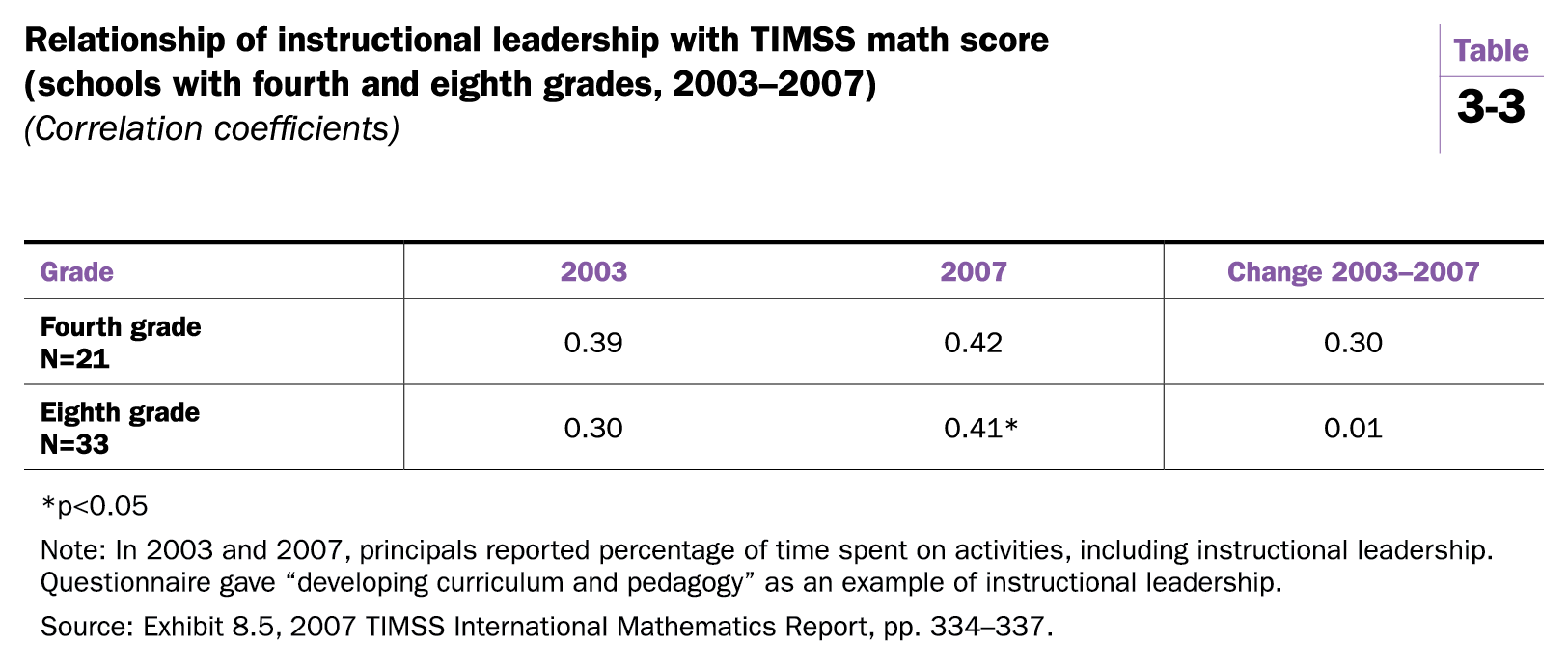
Table 3-3 presents correlation coefficients on the relationship of TIMSS math score with the amount of time principals spend on instructional leadership. For an explanation of correlation coefficients, please see the highlighted text box in part two of this report. The first two columns in Table 3-3-—2003 and 2007—report the cross-sectional relationships. The final column reports the correlation of change in TIMSS score to change in instructional leadership for 2003 to 2007.
U.S. principals estimated that they spent about 36 hours monthly on instructional leadership.
Principals were asked to estimate the percentage of time they spend on instructional leadership. The underlying data are not shown, but U.S. principals of schools with a fourth grade reported spending 26 percent of their time on instructional leadership in 2003 and 2007; for schools with an eighth grade, the figure was 24 percent, and it also remained unchanged from 2003 to 2007. The 2007 international averages on the question were 21 percent for fourth grade and 20 percent foreighth grade, both statistically significantly lower than the American figures. It is interesting that the time estimate for U.S. principals in TIMSS is much larger than the estimate in the Grissom, Loeb, and Master study described above, which was about 12.6 percent. Principals may be inclined to overestimate the amount of time they spend on instructional leadership when asked on a questionnaire. Grissom, Loeb, and Master followed principals around on campus to record their daily activities. That study also focused solely on principals in urban schools, so it is possible that a national sample of principals, as in TIMSS, would reveal a different pattern of behaviors.
Note that in fourth and eighth grades, the cross-sectional correlation coefficients are stronger in both 2003 and 2007 than in the longitudinal correlations for 2003-2007. The relationships at fourth grade fail to reach statistical significance, although they come close: 0.39 (p=0.08) in 2003 and 0.42 (p=0.06) in 2007. The correlation of change in leadership and test scores (0.30) is not close (p=0.19). The 2007 correlation in eighth grade (0.41) is statistically significant, but the relationship completely washes out when modeled over time (0.01). The bottom line to Table 3-3 is that there is no compelling evidence from the 2003-2007 data that changes in instructional leadership of school principals is related to changes in TIMSS math scores.
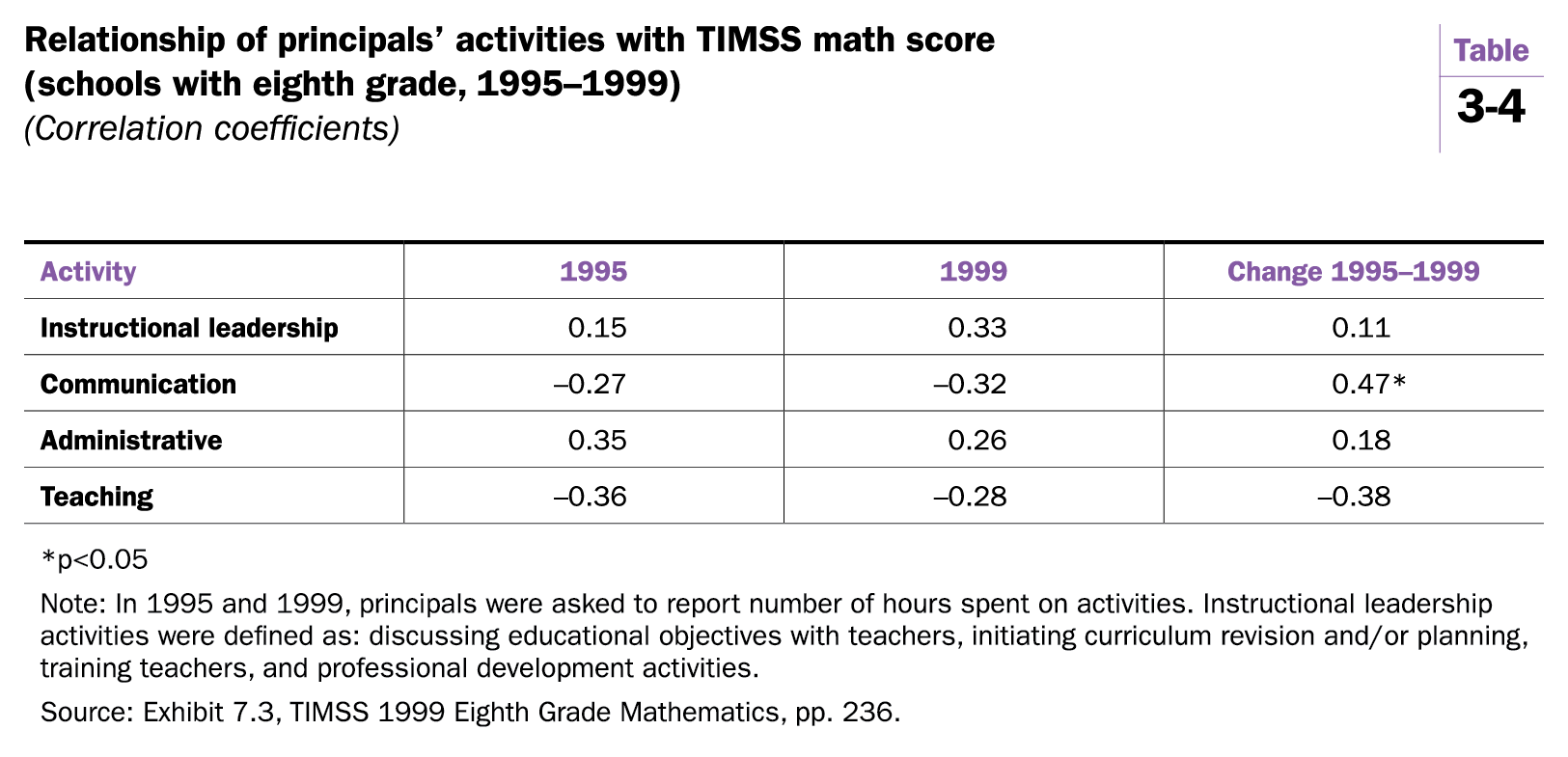
Table 3-4 displays data collected in 1995 and 1999 from principals of schools with eighth graders. Fourth grade was not part of TIMSS in 1999. The principal questionnaire was the same in 1995 and 1999. This time, principals were asked how many hours per month they devote to several activities, including instructional leadership In 1995, U.S. principals estimated that they spent about 36 hours monthly on instructional leadership, a bit more than (but not statistically significantly different from) the international average of 32 hours. National changes in instructional leadership from 1995 to 1999 were unrelated to changes in TIMSS scores (0.11).
Principals are most likely to influence instruction by developing and setting educational goals for their schools.
An activity that is correlated with achievement gains is communication. Note how negative correlations in the cross-sectional data (-0.27 in 1995 and -0.32 in 1999) appear positively related to achievement gains (0.47). This reversal is almost surely due to selection effects. In the questionnaire item, communicating is defined to include talking with parents, as well as counseling and disciplining students, activities that may dominate a principal’s time on unruly campuses. It also includes responding to requests from local, regional, or national authorities, a burden that would certainly increase at low achieving schools facing sanctions under an accountability system. The relationship is interesting but difficult to interpret (and beyond the scope of the present study). Future research would benefit from investigating these activities separately.
Summary and Conclusion
This section of the Brown Center Report offered an international perspective on the role of the school principal as an instructional leader. Principals’ responses to TIMSS surveys were examined at the national level, along with test scores in mathematics. The analysis calculated correlation coefficients to estimate whether test scores and the time principals spend on instructional leadership are associated. The analysis does not allow for causal conclusions, but it is useful for generating ideas and hypotheses for further research.
Instructional leadership varies from country to country, although a few commonalities were detected. Principals are most likely to influence instruction by developing and setting educational goals for their schools. They also monitor teachers’ implementation of goals, but are less likely to give advice to teachers who have questions or problems with their teaching. In some countries, giving pedagogical guidance may be considered an infringement on teacher autonomy, or perhaps teachers simply consult with peers or other sources for advice. Principals in three consistently high achieving countries—Finland, Hong Kong, and Japan—are especially reluctant to give advice. Principals in Korea, on the other hand, another perennially high achieving country, are more activist in this regard.
U.S. principals of schools with a fourth grade (typically an elementary school) are about average in terms of giving instructional advice but register above the international average on activities related to school goals. American principals of schools with an eighth grade (typically a middle school) appear about average on all four surveyed activities, with one interesting side note. Whereas international averages suggest principals of schools housing an eighth grade are more likely to spend time on instructional leadership than principals of schools with a fourth grade, the U.S. data indicates the opposite for American schools. Elementary school principals appear more involved with instruction than their middle school counterparts.
Archival TIMSS data were analyzed from two periods: 2003-2007 and 1995-1999. No clear evidence emerged that principals’ instructional leadership is correlated with achievement. A statistically significant positive relationship was discovered for eighth grade achievement in 2007, but the relationship faded away in the longitudinal analysis of data from 2003-2007. Culture looms as an omitted variable in the cross-sectional analysis, suggesting that the cross-sectional correlation may be specious. In an influential study of classroom instruction in three countries, Stigler and Hebert argued that teachers follow “cultural scripts” in their classroom instruction, teaching essentially in the same manner that they themselves were taught.13 That same notion of cultural scripts probably extends to the way principals view principal-teacher relations, making the longitudinal statistic, with its ability to control for cultural influences, a more reliable measure.
This study offers three takeaways for future research. First, the term “instructional leadership” is problematic. Without the description of specific behaviors, it can mean different things to different people. The definition may also change over time. It’s significant that the Grissom, Loeb, and Master study was published in 2013 and pinpointed leadership practices that are both positively and negatively related to student achievement. As a scholarly enterprise, measuring precise behaviors in rigorously designed studies is in its infancy.
Second, the context of instructional leadership is important. The current study examined data from principals of elementary and middle schools. Other conditions that could affect instructional leadership at an individual school include: the length of time a principal has worked with staff, the history of principal-teacher relations at the school, the degree of change that principals seek in teachers’ current instruction, the involvement of parents in curriculum and instruction at the school, the instructional resources available (e.g., funds for new materials and professional development), and the priority given to instructional leadership by the principals’ district, regional, or state authorities. Some of these contextual factors are empirical and can be quantified with administrative data, but many are not and will require more sophisticated forms of data collection.
Finally, the current status of principal leadership research is much like the effective teacher research. As pointed out in the brief review of literature above, great strides have been made in the ability to identify successful principals, those who make a difference in boosting student achievement at the schools they lead. Research has been less successful, however, in describing why particular principals are successful leaders—why they succeed while others, regrettably, struggle with leading their schools.
Table of contents
-
Footnotes
- Robert J. Marzano, Tony Frontier, and David Livingston (2011). Effective Supervision: Supporting the Art and Science of Teaching. (Association for Supervision and Curriculum Development)
- Ed Finkel (2012). “Principals as Instructional Leaders: But Can They Do It All? And at What Cost?” District Administration, June 2012.
- Hallinger, Phillip and Murphy, Jerome (1985). Assessing the Instructional Leadership Behavior of Principals,” Elementary School Journal, vol. 86, 2, pp. 217-248.
- Tim Waters, Robert J. Marzano, and Brian McNulty (2003). “Balanced Leadership: What 30 Years of Research Tells Us About the Effect of Leadership on Student Achievement,” Mid-Continent Regional Educational Lab.
- Dominic J. Brewer (1993). “Principals and Student Outcomes: Evidence from U.S. High Schools.” Economics of Education Review, vol. 12, no. 4, pp. 281-292.
- “School Leaders Matter,” Gregory F. Branch, Eric A. Hanushek, and Steven G. Rivkin, Education Next, vol. 13, no. 1 (Winter 2013),
- Grissom, J. A., Loeb, S., & Master, B. (2013). Effective instructional time use for school leaders: Longitudinal evidence from observations of principals. Educational Researcher, 42(8), pp. 433-444.
- See discussion of this study and classroom walkthroughs on Daniel Willingham’s blog: http://www.danielwillingham.com/daniel-willingham-science-and-education-blog/the-classroom-walkthrough-and-student-achievement
- Bob Witziers, Roel J. Bosker, and Meta L. Kruger (2003). “Educational Leadership and Student Achievement: The Elusive Search for an Association,” Educational Administration Quarterly, 39, 3, pp. 398-425.
- Principals were also asked about administrative duties, school safety, and student discipline (not shown in the tables).
- Elizabeth Green (2014), Building a Better Teacher. (New York: W. W. Norton & Company).
- Jan-Eric Gustafsson (2007). “Understanding Causal Influences,” in Lessons Learned: What International Assessments Tell Us About Math Achievement (Brookings Institution Press), pp. 37-65. Quote is from page 60.
- James Stigler and James Hebert (1999), The Teaching Gap (The Free Press).
The Brookings Institution is committed to quality, independence, and impact.
We are supported by a diverse array of funders. In line with our values and policies, each Brookings publication represents the sole views of its author(s).


